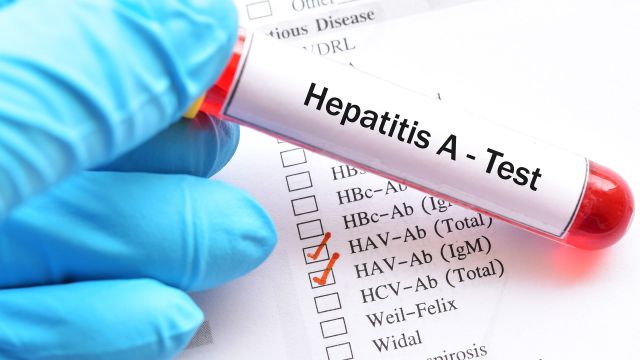Updated on March 27, 2024.
Every year, thousands of people in the United States are infected with the hepatitis A virus (HAV). Infection with HAV is rarely fatal, but it can be unpleasant and often requires months of recovery. Here’s what you need to know about this viral infection.
What is hepatitis A?
HAV is a contagious, acute viral infection that causes inflammation of the liver. The severity of the infection can vary from person to person and can range from a mild discomfort that lasts one to two weeks to a severe illness that lasts months and may require hospitalization. Rarely, HAV causes liver damage that requires a transplant, or even death.
“Those outcomes are pretty rare for hepatitis A, but it just underscores that this is not a mild disease,” says Sarah Park, MD, assistant clinical professor in the department of pediatrics at the John A. Burns School of Medicine at the University of Hawaii. She also notes that people with underlying liver conditions and older adults are more susceptible to a severe infection.
HAV is spread via fecal-oral transmission. This means that someone can get it by unintentionally eating something that is contaminated by small amounts of feces that contain the virus. It can also spread by living in close contact with an infected person, drinking contaminated water, or having sexual contact with someone who has HAV.
People at particular risk of infection include:
- Travelers visiting countries where HAV is common
- Those who have come in direct contact with someone with an active HAV infection, including caregivers of individuals with HAV
- Drug users (injection and non-injection)
- Men who have sex with men
- People who were recently in prison
- Those experiencing housing instability or homelessness
Signs and symptoms
Like many infections that inflame the liver, HAV can be very unpleasant. “When your liver is inflamed, it's not happy,” says Dr. Park.
Some of the common symptoms include:
- Fever
- Nausea
- Diarrhea
- Vomiting
- Abdominal pain
- Jaundice (yellowing of the skin and eyes caused by the buildup of a compound called bilirubin in the blood)
- Dark urine
- Clay-colored poop
- Loss of appetite
- Fatigue
- Joint pain
HAV has a fairly long incubation period, or the time between exposure and developing symptoms. It can take as long as 50 days and as short as two weeks for symptoms to appear. Usually it takes around four weeks after exposure.
That can make it difficult for epidemiologists (scientists who study and track the spread of disease) to pinpoint the source of an outbreak. People who have HAV become infectious one to two weeks before the onset of symptoms and may remain contagious up to three weeks after symptoms arise.
How outbreaks happen
HAV has historically been fairly uncommon in the U.S., though several large outbreaks in recent years have caused jumps in the total number or infections.
Total estimated infections rose from 4,000 in 2016 to 6,700 in 2017, then spiked to 24,900 in 2018 and 37,700 in 2019, according to data from the Centers for Disease Control and Prevention (CDC). The numbers tapered off to 19,900 in 2020 and then again to 11,500 in 2021.
Outbreaks are typically caused by foodborne or person-to-person transmission.
“What we're seeing more and more is, countries like the U.S., first-world nations, are relying on food production from third-world nations or developing nations where standards of hygiene in food production may not be up to our standards,” says Park.
Outbreaks attributed to person-to-person transmission are often the result of cases among adults who use drugs or experience homelessness, according to the CDC.
Prevention is key
There is no specific treatment for HAV. Supportive care for the disease includes rest, drinking fluids, and eating well. Thankfully, there is a vaccine available. The vaccine requires two shots, administered six months apart. “It's a highly effective vaccine,” says Park. “It's reported to be 99, almost 100 percent effective.”
Despite the availability of a vaccine, HAV outbreaks persist. That’s partially due to the fact that many adults in the U.S. have never received the vaccination. Adults typically get the HAV vaccine if they have been identified as at higher risk for infection or if they plan to travel outside of the U.S.
While many adults have never received the vaccine, it is now part of standard childhood immunizations and has been since 2006. This will hopefully result in fewer and fewer cases of HAV over time.
If you would like to receive the HAV vaccine, particularly if you are in an at-risk population, talk to your healthcare provider and be sure to remember the second dose six months after the original.



